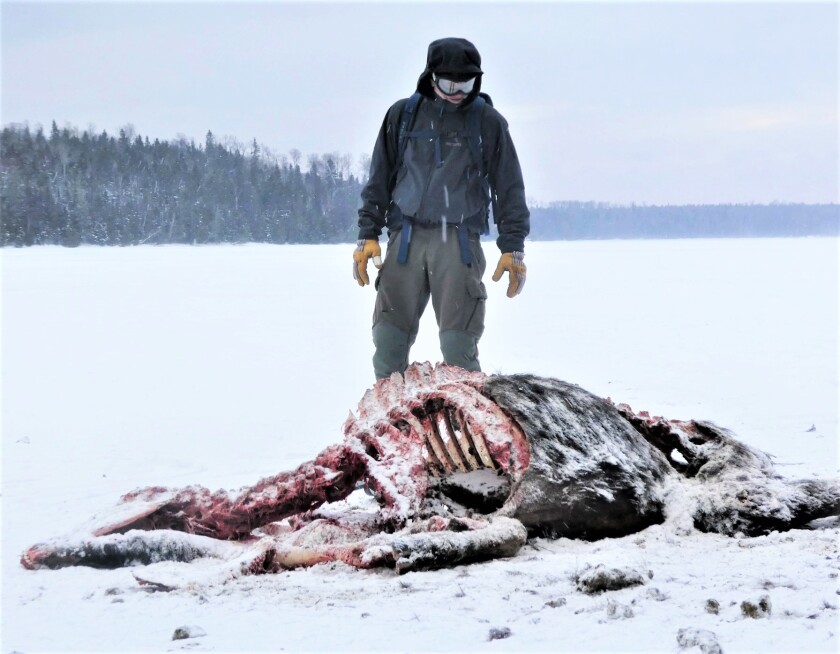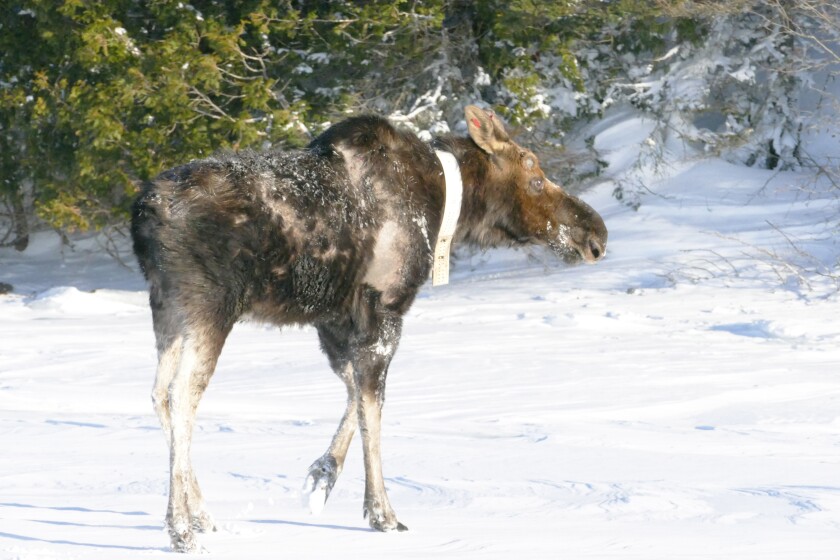HOUGHTON, Mich. — The number of wolves living on Isle Royale has nearly doubled to 28, a sign that the effort to transplant outside wolves to the Lake Superior island has taken hold.
The wolves — now all descendants of animals brought to the island from Minnesota, Ontario and Michigan — also are doing their job at reducing what had been a burgeoning moose population, with 2022 moose numbers down 28% from 2020 levels.
ADVERTISEMENT
Those were the long-delayed findings from the 63rd annual winter survey held earlier this year by researchers from Michigan Technological University. It’s the longest running research project on predator prey relationships in the world.
It was the first full-scale survey of moose and wolves on the island since 2020 because of COVID-19 concerns for research crews. The seven-week expedition by ski and plane took place Jan. 25 through March 6 on the 850-square-mile archipelago located about 15 miles off Minnesota’s North Shore.
The report, usually released in April, was released Wednesday, with the reason for the delay unclear.

At least five litters of pups have been born on Isle Royale since 14 wolves were translocated to the island in 2018-19, said Sarah Hoy, a Michigan Tech research assistant professor. The wolves appear to be living in two packs: one in the island’s western region and the other in the eastern.
“Each time we carried out aerial surveys this winter, we saw wolf tracks across many parts of the island and we also regularly saw groups of wolves traveling or resting together,” Hoy said in this year’s annual report. “It is such a pleasant change from five years ago when there were only two wolves on the island and the future of the wolf population looked pretty bleak. It just goes to show how quickly wolf populations are able to thrive in places where they are free from persecution.”

But while wolves are thriving, moose are having a tougher time on the wilderness island National Park. After exploding in number for a decade, the moose population is heading headlong into another bust part of the continual up-and-down cycle. Only 4% of the moose counted during the winter survey were calves, the lowest number observed since 2007.
Researchers estimated 1,346 moose on the island last winter, down 28% from 1,876 estimated in 2020.
ADVERTISEMENT
Researchers found that wolves killed less than 10% of the moose that died last winter. Most moose appeared to have died from malnutrition, in part because of blood-sucking winter ticks — each moose can carry hundreds, even thousands of ticks — but also because moose have run out of balsam fir, an important winter food. Moose became so numerous on the island over the past decade they literally depleted their food source. Meanwhile an outbreak of spruce budworm, an insect that eats the needles on balsam and spruce trees, also is occurring on the island.
“Over the past year, we found an unusually high number of moose that appear to have died due to malnutrition,” Hoy said. “The population appears to be suffering from a food shortage, especially in winter when moose don’t have many good options of things to eat.”
Rolf Peterson, Michigan Tech researcher who has been studying wolves and moose on the island since 1970, said he’s not surprised by how fast wolves have expanded.
“They have plenty to eat and I think we’ll see their numbers continue to go up,’’ Peterson told the News Tribune. “We’ve had as many as 50 wolves on the island before so there’s still room for them to grow.””
Peterson noted that wolves also appear to be checking the island’s beaver population. When wolf numbers had crashed a decade ago, beaver numbers increased five fold to the highest level in at least a century, Peterson said. Now, beaver numbers are dropping as wolves increase.
“Beaver are an important summer food for the wolves,’’ he said.
This winter, researchers worked in partnership with the National Park Service and Grand Portage Band of Lake Superior Chippewa to outfit 19 moose with GPS collars, part of an ongoing project to assess the influence of predation on moose now that the wolf population has been restored. Hoy, Peterson and fellow Michigan Tech researcher John Vuectich also worked with National Park Service biologists to place GPS-transmitting collars on several wolves to monitor their activities.











